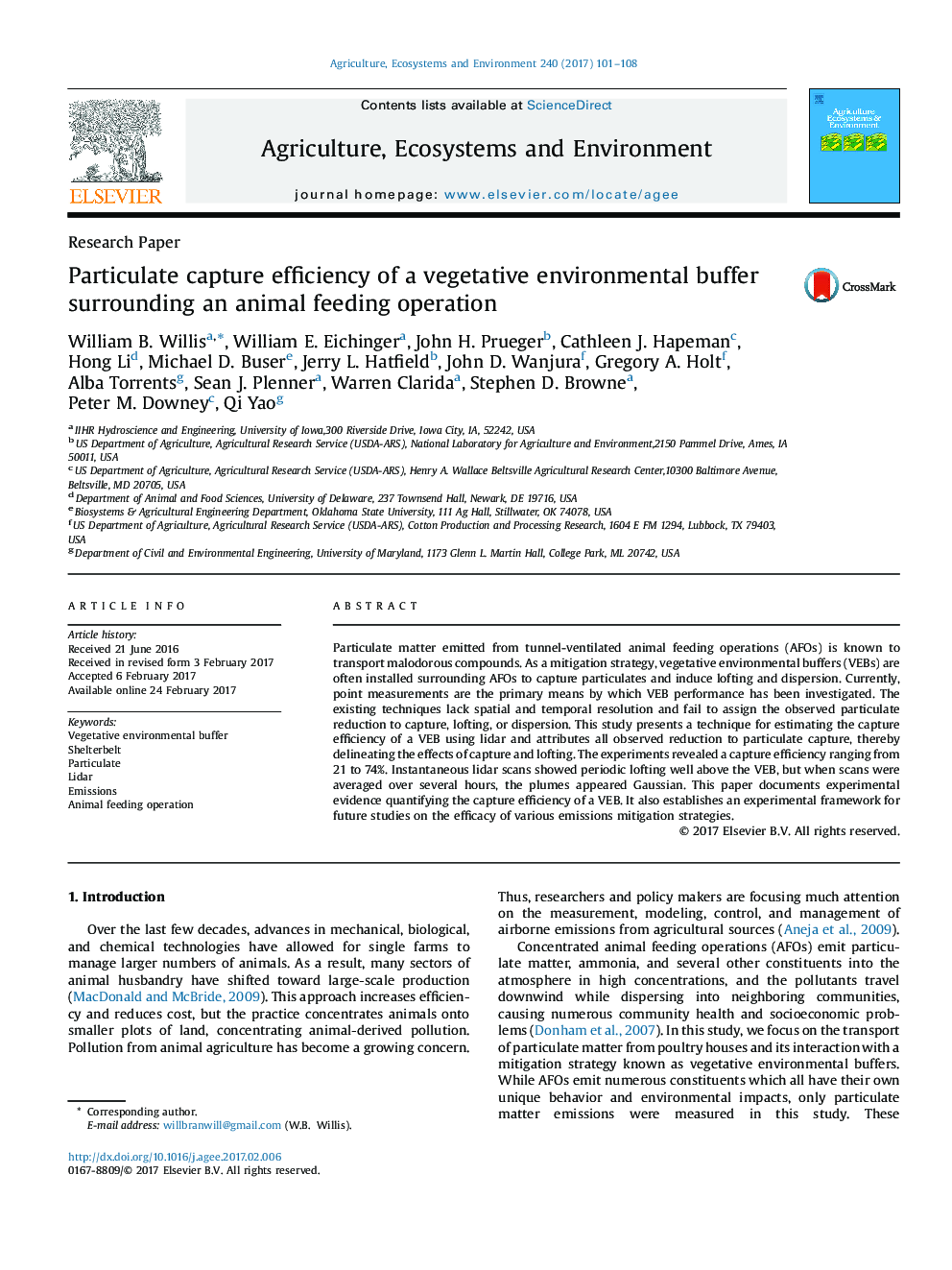| Article ID | Journal | Published Year | Pages | File Type |
|---|---|---|---|---|
| 5538159 | Agriculture, Ecosystems & Environment | 2017 | 8 Pages |
Abstract
Particulate matter emitted from tunnel-ventilated animal feeding operations (AFOs) is known to transport malodorous compounds. As a mitigation strategy, vegetative environmental buffers (VEBs) are often installed surrounding AFOs to capture particulates and induce lofting and dispersion. Currently, point measurements are the primary means by which VEB performance has been investigated. The existing techniques lack spatial and temporal resolution and fail to assign the observed particulate reduction to capture, lofting, or dispersion. This study presents a technique for estimating the capture efficiency of a VEB using lidar and attributes all observed reduction to particulate capture, thereby delineating the effects of capture and lofting. The experiments revealed a capture efficiency ranging from 21 to 74%. Instantaneous lidar scans showed periodic lofting well above the VEB, but when scans were averaged over several hours, the plumes appeared Gaussian. This paper documents experimental evidence quantifying the capture efficiency of a VEB. It also establishes an experimental framework for future studies on the efficacy of various emissions mitigation strategies.
Related Topics
Life Sciences
Agricultural and Biological Sciences
Agronomy and Crop Science
Authors
William B. Willis, William E. Eichinger, John H. Prueger, Cathleen J. Hapeman, Hong Li, Michael D. Buser, Jerry L. Hatfield, John D. Wanjura, Gregory A. Holt, Alba Torrents, Sean J. Plenner, Warren Clarida, Stephen D. Browne, Peter M. Downey, Qi Yao,
